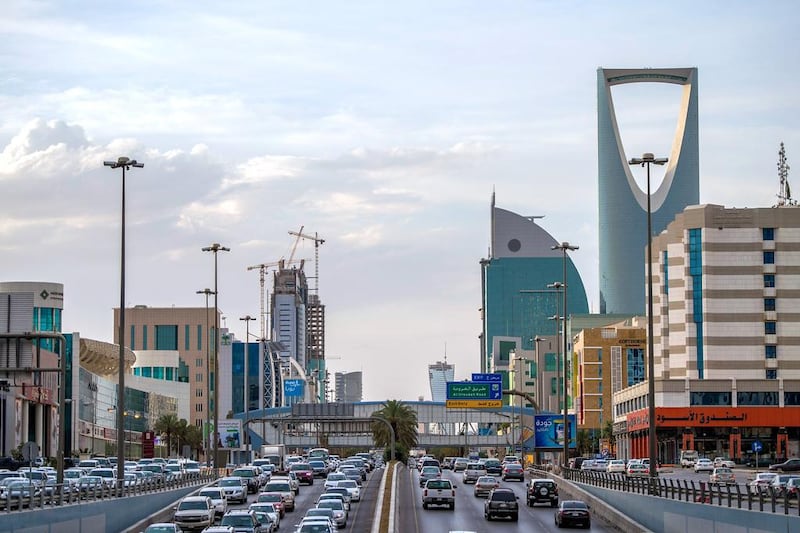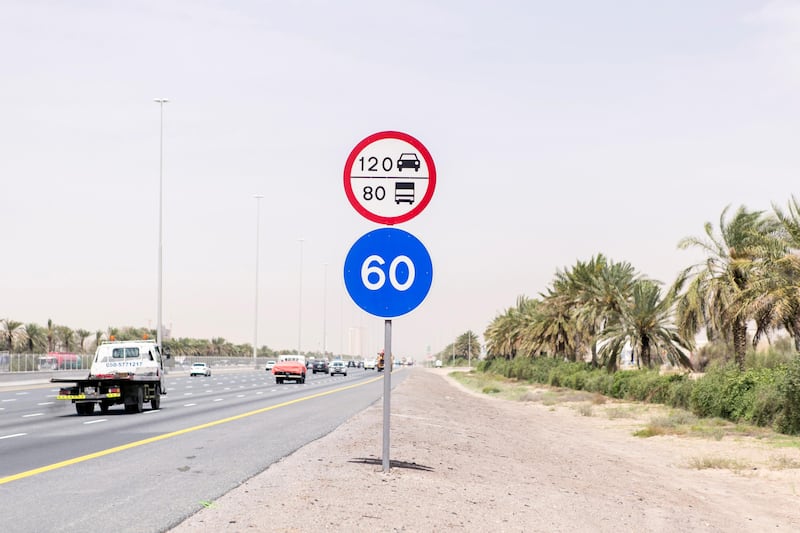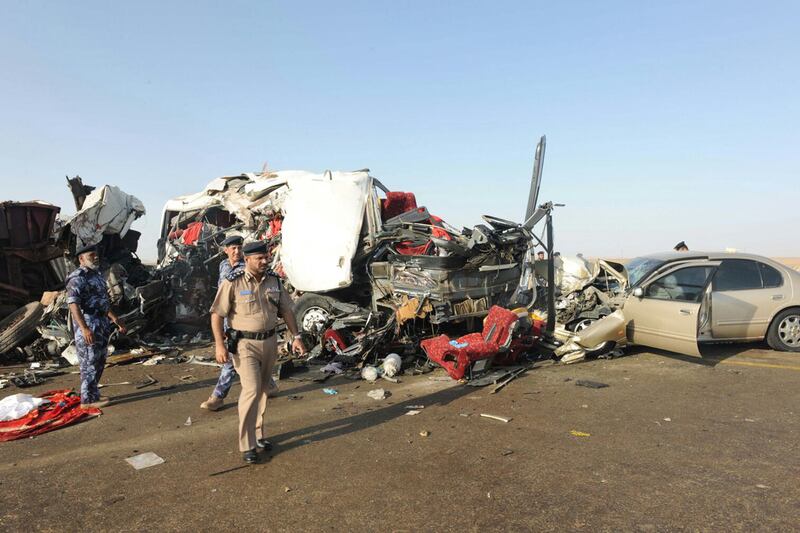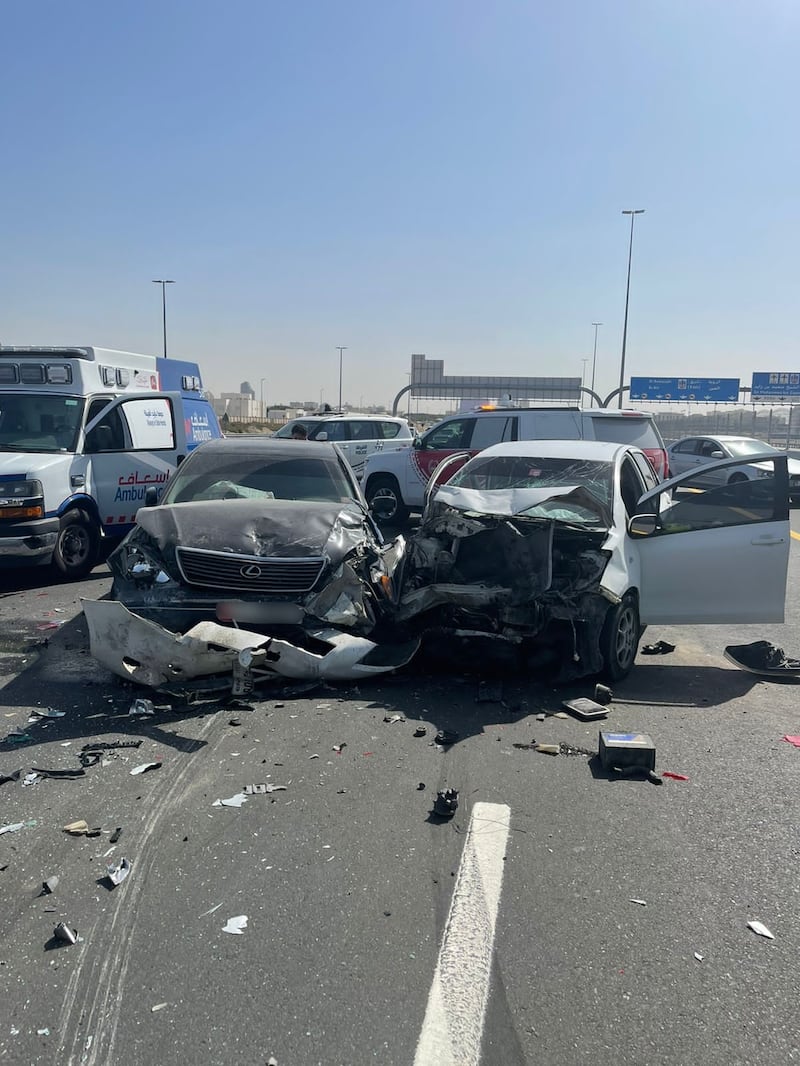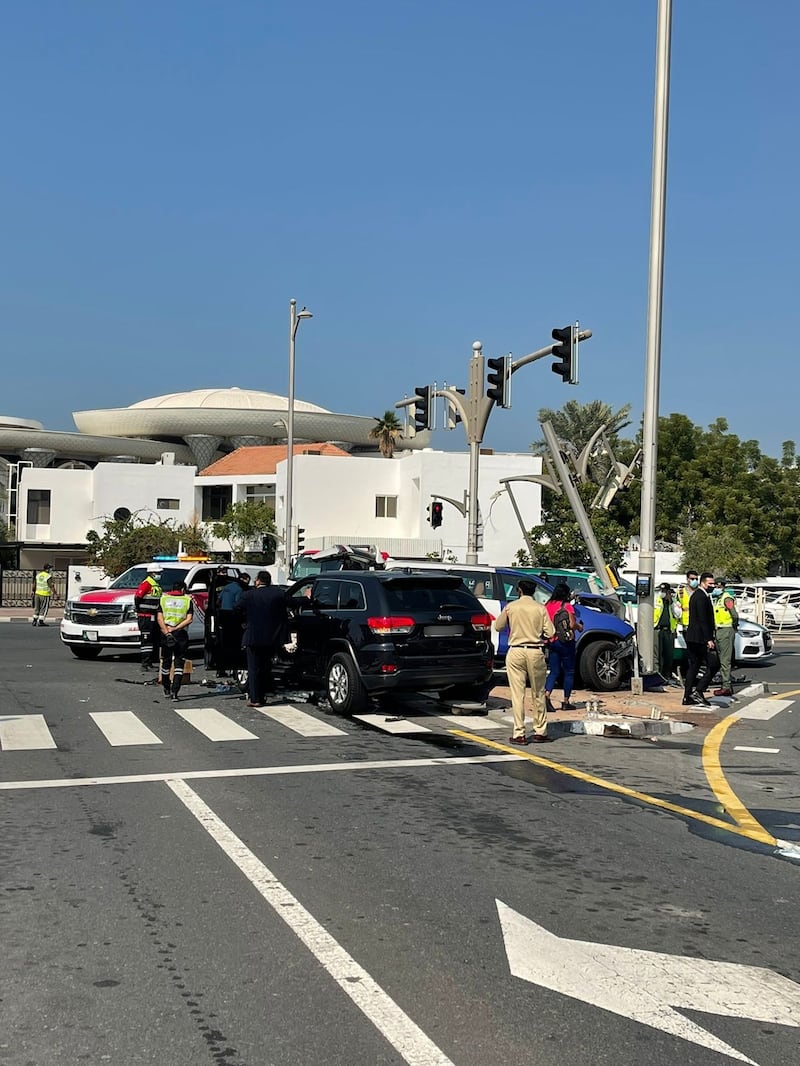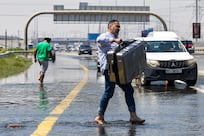Every year, about 1.35 million people die from road traffic injuries, the World Health Organisation has said.
A further 50 million people worldwide are hurt or disabled by such injuries, placing the issue of road safety high on the UN agenda.
However, much of the world has fallen short of a target to halve the number of road deaths and injuries by 2020.
People aged 15 to 29 were found to have the greatest chance of dying in a road crash. Traffic injuries are currently thought to be the eighth leading cause of death across the world. This is predicted to climb to seventh by 2030.
But how does the Middle East compare when it comes to keeping people safe on the roads?
Dave Cliff, chief executive of the Global Road Safety Partnership at the International Federation of Red Cross and Red Crescent Societies, told The National there is a problem in the region of "significant underreporting" of accidents and deaths.
“Underreporting of fatal and serious-injury crashes is a major global problem, particularly in low and middle-income countries," he said.
“GRSP highlighted this exact issue to the recent UN high-level meeting on road safety."
He suggested that lower traffic volumes in many countries as a result of Covid-19 restrictions could also have had an effect.
The next WHO global status report is due in 2023.
UAE
Despite increasing levels of traffic, road deaths in the UAE have almost halved since 2014 due to a series of safety measures and regulations.
In 2014, 712 deaths were recorded in road traffic accidents by the Ministry of Interior. This fell to 675 in 2015, 448 in 2019 and 381 last year.
Government figures show that road deaths have fallen by two thirds since 2008, when 1,072 were reported.
But despite the drop in the number of recorded UAE road deaths, WHO figures suggest considerably more people could have lost their lives in these circumstances.
In 2015, the WHO estimated there were 1,676 road deaths compared with 870 in 2019 — about double the 448 figure recorded in the Emirates.
The WHO estimates road traffic deaths by assessing a range of national variables.
They include gross domestic product, total vehicles for every 1,000 people, the number of roads, national speed limits, access to health care, the working population, percentage of motorbikes, corruption and national policies for walking and cycling.
Saudi Arabia
The number of people killed as a result of road traffic crashes in Saudi Arabia has more than doubled in a decade to 27.4 for every 100,000 people.
The country aims to reduce the number of road traffic deaths to fewer than 10 for every 100,000 people by 2030.
In 2015, the WHO reported 8,313 road deaths but that number leapt to 12,317 in 2019 — the most recent annual data set.
Road safety strategies include a penalty point system and ensuring motorcycle helmet laws apply to all riders, both drivers and passengers.
Seat-belt laws have been extended to include all occupants in the rear, while drink-driving laws are also in effect despite a nationwide alcohol ban.
In 2018, the National Ministerial Traffic Safety Committee began a four-year road safety strategy. It established collaborative relationships between the Ministry of Health, Ministry of Interior and others to address the different causes of road traffic accidents.
Oman
Speeding and poor driving skills are being blamed as the main causes of road accidents in the sultanate.
In 2015, the country's number of road deaths was 696 — that fell to 527 in 2019.
Revised seat-belt laws to apply to passengers as well as drivers, new child-restraint laws and a ban on using mobile phones at the wheel addressed some of the main causes of road deaths.
Bahrain
In 2021, Bahrain achieved the largest reduction in road deaths and injuries in the region — a 35 per cent drop.
Overall since 2015, road deaths have fallen from an annual number of 103 to 85 in 2019.
Although the development of new cities increased traffic volume, it did not result in more road injuries and fatalities.
This was a result of better traffic monitoring, more rigorous law enforcement by increased foot and car patrols, and engineering solutions in congested areas.
Jordan
The number of road deaths have fallen in Jordan from 2,220 in 2015 to 1,717 in 2018 according to the WHO — but the country remains plagued by high traffic-related fatalities and injuries.
National seat-belt laws apply only to drivers and are moderately enforced.
According to the GRSP, only 42 per cent of front-seat occupants were found to be wearing seat-belts.
There are no child-restraint laws and a third of those killed on the roads are pedestrians.
The Traffic Department has been more active in campaigning publicly for road safety, mainly by publishing regular statistics and shaming reckless drivers on social media and publishing photos of horrific accidents.
Roads in Jordan are poorly maintained although the Saudi Fund for Development has paid in the past decade for major motorways, including a large proportion of the desert road south, a new motorway to Zarqa — Jordan’s second city — and the airport road.
There is the occasional speed camera but not to the degree that exists in the Gulf.
The Traffic Department often cites speeding as a cause of accidents.
Lebanon
A 2021 study by the Faculty of Medicine at the American University of Beirut found 72 per cent of those injured in road accidents were men, with an average age of 32.
It also found almost half of those injured (48 per cent) were passengers aged 15-29, while motorcyclists suffered the greatest proportion of injuries at 38 per cent.
Figures from the WHO showed traffic deaths rose from 1,058 in 2015, to 1,127 in 2019.
Half of the accidents occurred on unmarked two-way roads.
A national assessment in 2016 looked at the functional and structural condition of the roads and rated the safety of the network for vehicle occupants, motorcyclists, pedestrians and cyclists from one to five stars.
Only 10 per cent of the network was awarded the benchmark three-star rating or better.
Since then, a $170 million loan from the World Bank under the Safer Roads Investment Plan aimed to improve safety on roads to give 70 per cent of routes a three-star rating by 2030.
In 2021, a further 20 auditors were trained to monitor improvements and conduct regular safety checks at traffic pinch-points in Beirut.
Tammam Nakkash, a transport systems expert and public transportation advocate, says traffic safety laws are rarely enforced consistently.
"Anyone can get a driver's licence without even taking the driver's test," Mr Nakkash said. "All one would have to do is 'grease the wheel' a little bit."
Despite being legally obliged to, drivers and front-seat passengers rarely wear their seat-belts and the law is often not enforced — neither is a law stipulating that babies and infants must ride in child-seats until they are 5.
Mr Nakkash, who had long advocated a reliable public transport system in Lebanon, said road safety in the country had essentially crumbled.
"We are worse off than it ever was in the past, we are similar to how Beirut was around 1994-1995," he said, referring to a turbulent era of post-war reconstruction, when much of the capital's infrastructure was in disarray after 15 years of civil war.
"It's chaos."
Additional reporting by Nada Homsi in Beirut and Khaled Yacoub Oweis in Jordan
